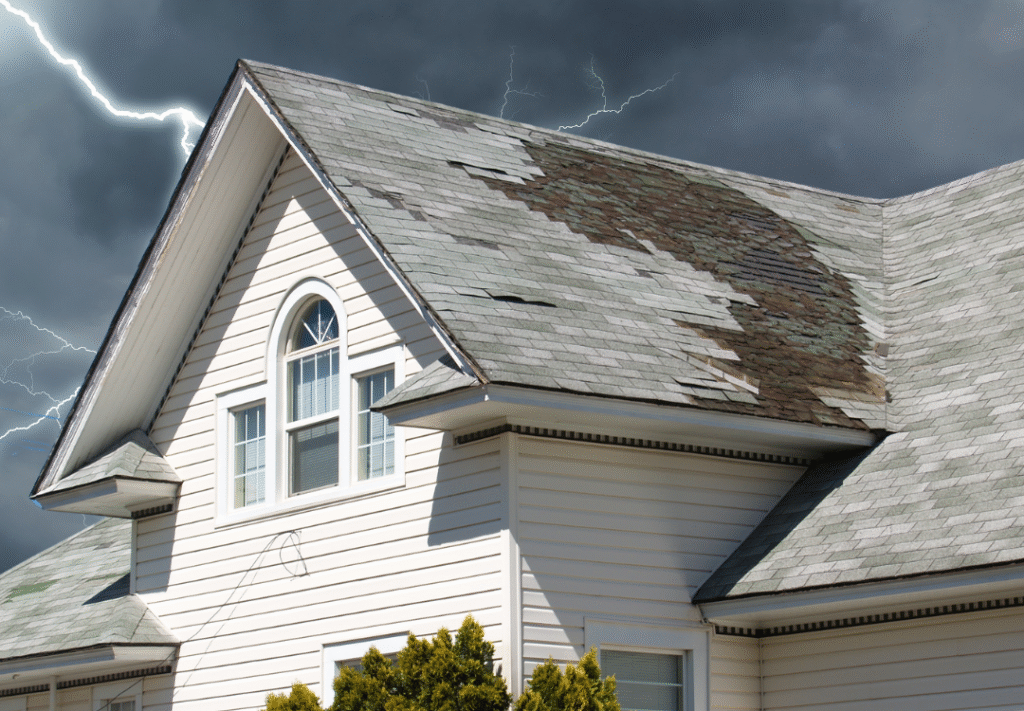When a storm warning flashes across your screen, your first thought may be: Are the windows closed? Is the car in the garage? But long before those final minutes of preparation, the real defense against severe weather should already be in place—built right into your home’s exterior, notes property management Vail AZ company, Foothills Properties.
Roofing, siding, and gutters do more than create curb appeal. They act as the armor that protects your home when nature turns hostile. Wind, hail, driving rain, snow, and falling debris all test the limits of your home’s envelope. And it’s not just about surviving a single storm—it’s about long-term resilience.
Here’s how to storm-proof these three essential components of your home and why a proactive approach makes all the difference.
Roofing: Your First Line of Defense
Your roof absorbs the most impact during a storm. High winds, heavy rain, hail, and falling branches can exploit even small weaknesses in materials or installation.
Key steps to strengthen your roofing system:
- Inspect shingles regularly
Look for curling, cracking, or missing shingles. These are areas where wind can lift and water can penetrate. - Secure flashing
Loose flashing around chimneys, vents, and skylights is a common failure point during heavy winds. - Check attic ventilation and insulation
Proper airflow and insulation reduce the chances of ice dam formation in winter storms and help regulate attic pressure during wind events. - Clean roof valleys
These channels direct massive volumes of water during heavy rain. Any blockages can lead to leaks and pooling. - Upgrade to impact-resistant materials if replacing
Class 4 shingles offer superior performance in hail-prone regions and may qualify for insurance savings.
Roofs with consistent maintenance not only last longer but also offer fewer vulnerabilities during extreme conditions.
Siding: Don’t Let Wind Find a Way In
Many people associate siding with aesthetics—but during a storm, its structural role becomes clear. It’s the shield that protects insulation, framing, and interior walls from water and air intrusion.
How to storm-proof your siding:
- Inspect for gaps, warping, or loose panels
Wind can pry open even the smallest separation. Once water gets behind siding, mold and rot are inevitable. - Reinforce corner posts and joints
These are the weak spots where wind gusts tend to create uplift or tearing. - Trim trees near siding panels
Branches scraping or striking siding during a storm can cause surface damage that compromises waterproofing layers. - Seal openings and penetrations
Utility entrances, hose bibs, and vent covers should be sealed with weather-resistant caulking to prevent wind-driven rain entry.
For areas frequently hit by hurricanes or blizzards, choosing more durable siding—like fiber cement or reinforced vinyl—adds long-term storm resistance.
Gutters: Small System, Big Consequences
While less glamorous, your gutters play a critical role in storm protection. Their function isn’t just to direct rainwater—it’s to prevent that water from overwhelming your roof, flooding your foundation, or pouring into your siding.
How to get your gutters storm-ready:
- Clear all debris before storm season
Clogged gutters overflow, which defeats their purpose during heavy rain. Even one blockage can cause roof damage and fascia rot. - Secure loose brackets and fasteners
Gutters that detach under stress can create wind resistance and tear off entire fascia boards with them. - Add downspout extenders
Ensure water is directed at least 4 feet away from the home to avoid foundation saturation. - Check slope and flow direction
Improperly angled gutters cause pooling, which freezes in winter or overflows in summer. - Install gutter guards if needed
These reduce the chance of debris buildup and improve long-term system performance—especially in areas with heavy tree coverage.
Seasonal Preparation Checklist
Proactive seasonal prep is the best defense against unpredictable weather. Here’s a quick checklist to tackle before storm season hits:
- Roofing
- Walk the perimeter and scan for loose or missing shingles
- Check flashings and valleys for signs of wear or damage
- Have the attic inspected for leaks or light penetration
- Walk the perimeter and scan for loose or missing shingles
- Siding
- Tap along panels to check for movement or hollow spots
- Reinforce trim boards and corners
- Seal all visible gaps or cracks with weather-grade sealant
- Tap along panels to check for movement or hollow spots
- Gutters
- Flush the entire system with water to test for slow drainage
- Refasten any sagging sections
- Verify downspout discharge is effective and directed away from your home
- Flush the entire system with water to test for slow drainage
Performing these tasks well before the storm ensures you’re not scrambling during a weather warning—and helps prevent the kind of water damage that lingers long after the sky clears.
Post-Storm Inspections Matter Too
After a significant storm, it’s essential to do a full visual inspection. Hidden damage is common and can escalate if not addressed quickly. Look for:
- Shingle granules in downspouts (a sign of hail impact)
- Dented or buckled siding panels
- Loose gutter brackets or misaligned downspouts
- Water stains on interior ceilings or walls
Even if your home appears intact, small breaches often worsen with every new weather event. Identifying issues early helps avoid emergency repairs later.
System Harmony Is Key
Storm resistance isn’t just about individual parts—it’s about how your roofing, siding, and gutters work together. Misalignment between systems creates points of failure. For example:
- A gutter pulling away from the roofline exposes fascia, compromising roof edge sealing.
- Siding that overlaps improperly with flashing allows rain to wick underneath.
- A missing roof shingle allows water to enter the wall cavity, behind perfectly intact siding.
That’s why many homeowners coordinate their exterior improvements through full-system evaluations. Professionals like All-Side Roofing & Restoration often recommend system integration strategies during replacements or major repairs to ensure durability is maximized across the board.
Final Thoughts: Weather the Storm Before It Hits
Storm-proofing your home is less about reacting—and more about building resilience into the structure itself. When your roofing, siding, and gutters are aligned, sealed, and functioning as one, your home can withstand even the toughest elements.
Don’t wait until you’re in the eye of the storm to discover a leak, crack, or blockage. A home that’s prepared is a home that weathers everything—quietly, confidently, and without surprise.






